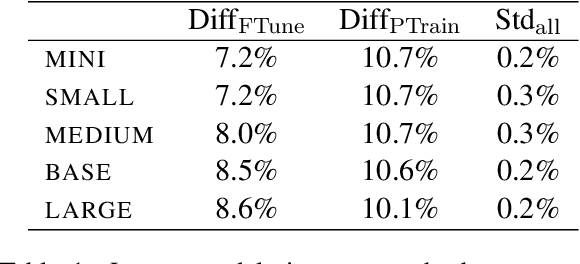Are Larger Pretrained Language Models Uniformly Better? Comparing Performance at the Instance Level
Paper and Code
May 13, 2021



Larger language models have higher accuracy on average, but are they better on every single instance (datapoint)? Some work suggests larger models have higher out-of-distribution robustness, while other work suggests they have lower accuracy on rare subgroups. To understand these differences, we investigate these models at the level of individual instances. However, one major challenge is that individual predictions are highly sensitive to noise in the randomness in training. We develop statistically rigorous methods to address this, and after accounting for pretraining and finetuning noise, we find that our BERT-Large is worse than BERT-Mini on at least 1-4% of instances across MNLI, SST-2, and QQP, compared to the overall accuracy improvement of 2-10%. We also find that finetuning noise increases with model size and that instance-level accuracy has momentum: improvement from BERT-Mini to BERT-Medium correlates with improvement from BERT-Medium to BERT-Large. Our findings suggest that instance-level predictions provide a rich source of information; we therefore, recommend that researchers supplement model weights with model predictions.
 Add to Chrome
Add to Chrome Add to Firefox
Add to Firefox Add to Edge
Add to Edge